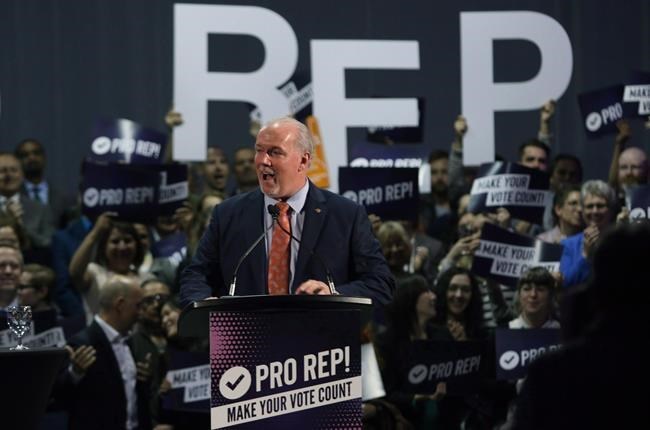British Columbians are nearing the end of a significant opportunity to improve the integrity of the democratic processes governing provincial elections. Unlike in past referendums, B.C. voters get to weigh in on which form of proportional representation they think is best for the province.
Unfortunately, those campaigning for the status quo have refused to stick to the facts when discussing the second question, leaving many unsure about what each option would mean for B.C.
In this piece, I will correct the invalid claims that have been made about the dual member proportional voting system. As the inventor of DMP, I believe it is my responsibility to set the record straight so that B.C. voters can make an informed decision.
First, opponent groups have repeatedly claimed that rural areas will be left behind by proportional representation. Rural inclusion is why I started working on the issue of electoral reform. I grew up in northern Canada and saw first-hand how first-past-the-post misrepresented my community. However, I also realized that many of the alternatives proposed to fix FPTP would not fully include rural voters.
While the other two alternatives in this referendum would be an improvement over FPTP, DMP most thoroughly addresses this issue. It is the only system that would give every voter, whether they live in a dense urban centre such as downtown Vancouver or a small town in B.C.’s Interior, the same opportunity to have their voice heard in elections.
Of the systems on offer, DMP would lead to the most voters having an effect on election outcomes and provide the most flexibility to limit increases in the size of B.C.’s rural ridings.
In fact, the largest ridings in northern B.C. would keep their current district boundaries.
Second, the No campaign has attacked the alternative systems, including DMP, because some details will be fleshed out after the vote. DMP is the most well-defined alternative in the referendum, and there are no significant details left to be filled in. While concern about this issue isn’t a reason to vote No, it might be a reason to support DMP over the other two systems.
Finally, those favouring the status quo have repeatedly said that all of the alternative voting systems would result in “appointed” MLAs. This is false. Candidates would be elected based on voter support in all of the systems.
Under DMP, every candidate would face voters directly and be subject to a very competitive process to be elected. Candidates would be competing not only to have the most votes locally, but also to have the highest vote share among the other candidates from their party across the province.
In short, parties wouldn’t decide which candidates are elected, voters would.
Dual member proportional would fix what’s broken with FPTP without drastically altering the status quo. It would retain the local representation and simple ballot that British Columbians value, while ensuring that each party’s seat share matches the votes they receive.
Importantly, it would also fully include rural voters and protect the boundaries of B.C.’s largest ridings.
Sean Graham of Edmonton is the inventor of the dual member proportional voting system. More information about DMP can be found at DMPforCanada.com.



